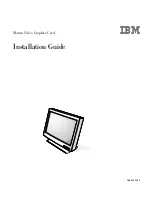
9
Using the SCSI Card 1505 and SCSI Peripherals
Using the SCSI Card 1505
and SCSI Peripherals
This section provides useful information on using the SCSI Card
1505 and your SCSI peripherals. For specific information, refer to the
documentation that came with your SCSI peripheral.
Setting SCSI Card Jumpers
There is one jumper on your SCSI Card 1505. Jumper J3 controls the
I/O Port Address. You do not need to change the J3 Jumper setting
in a Plug-and-Play system (that is, a system with a motherboard
Plug-and-Play BIOS and Windows 95, Windows NT or OS/2).
If your system is not Plug-and-Play, you may need to change the I/O
address if it conflicts with another device installed in your system. To
change the I/O Address, remove the shunt from Jumper J3.
Using SCSI Peripherals
Hard Disk Drives
■
Every SCSI hard disk must be physically low-level formatted,
partitioned, and logically formatted before it can be used to
store data. SCSI hard disks are physically low-level formatted
at the factory and do not usually need to be formatted again.
If you connected a new SCSI hard disk drive to your SCSI card,
you must partition and logically format the drive. For DOS and
Windows (3.x, 95, NT or OS/2) use the DOS
Fdisk
and
Format
commands (see your computer, DOS, Windows, or OS/2 docu-
mentation).
Table 1. Default Settings
Settings
J3
I/O Port Address—140h*
On
I/O Port Address—340h
Off
*Default Setting
Содержание AVA-1505A
Страница 1: ...USER S REFERENCE SCSI CARD 1505 ...
Страница 3: ...R SCSI Card 1505 User s Reference ...
Страница 4: ......
Страница 30: ......
















































